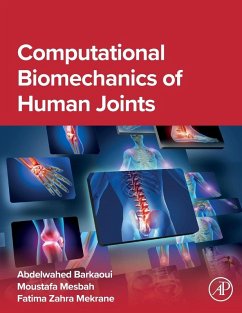Computational Biomechanics of Human Joints delves into the intricate details of each joint, exploring anatomical, mechanical, pathological, and therapeutic aspects. The book offers a comprehensive understanding of joint biomechanics by dedicating each chapter to specific joints, detailing their anatomical structure, biomechanical mechanisms, associated diseases, and pathologies. It also covers treatments, surgical interventions, and imaging-based modeling alongside numerical simulation techniques using the finite element method. This approach provides readers with an innovative perspective on the technological advancements in joint biomechanics. In addition to exploring joint-specific details, the book discusses the advantages and limitations of modern techniques. Finally, the book emphasizes the potential for these methods to improve clinical decision-making, optimize personalized treatments, and design medical devices. The integration of advanced modeling and simulation techniques enhances the understanding of the complex mechanisms of joints, contributing significantly to both academic research and practical clinical applications.
Hinweis: Dieser Artikel kann nur an eine deutsche Lieferadresse ausgeliefert werden.
Hinweis: Dieser Artikel kann nur an eine deutsche Lieferadresse ausgeliefert werden.

